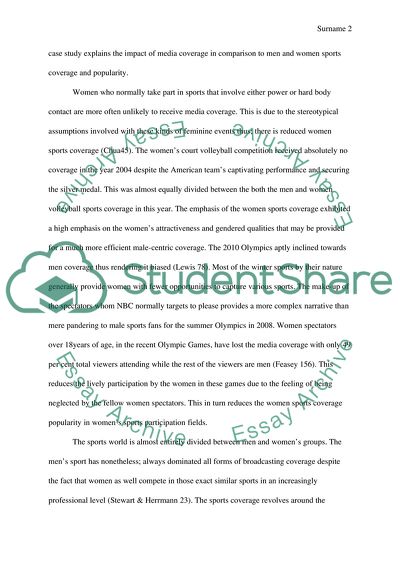Cite this document
(Men versus Women in Sports Media Coverage and Popularity Case Study Example | Topics and Well Written Essays - 1500 words - 1, n.d.)
Men versus Women in Sports Media Coverage and Popularity Case Study Example | Topics and Well Written Essays - 1500 words - 1. https://studentshare.org/gender-sexual-studies/1805368-men-versus-women-sports-coverage-and-popularity
Men versus Women in Sports Media Coverage and Popularity Case Study Example | Topics and Well Written Essays - 1500 words - 1. https://studentshare.org/gender-sexual-studies/1805368-men-versus-women-sports-coverage-and-popularity
(Men Versus Women in Sports Media Coverage and Popularity Case Study Example | Topics and Well Written Essays - 1500 Words - 1)
Men Versus Women in Sports Media Coverage and Popularity Case Study Example | Topics and Well Written Essays - 1500 Words - 1. https://studentshare.org/gender-sexual-studies/1805368-men-versus-women-sports-coverage-and-popularity.
Men Versus Women in Sports Media Coverage and Popularity Case Study Example | Topics and Well Written Essays - 1500 Words - 1. https://studentshare.org/gender-sexual-studies/1805368-men-versus-women-sports-coverage-and-popularity.
“Men Versus Women in Sports Media Coverage and Popularity Case Study Example | Topics and Well Written Essays - 1500 Words - 1”. https://studentshare.org/gender-sexual-studies/1805368-men-versus-women-sports-coverage-and-popularity.


